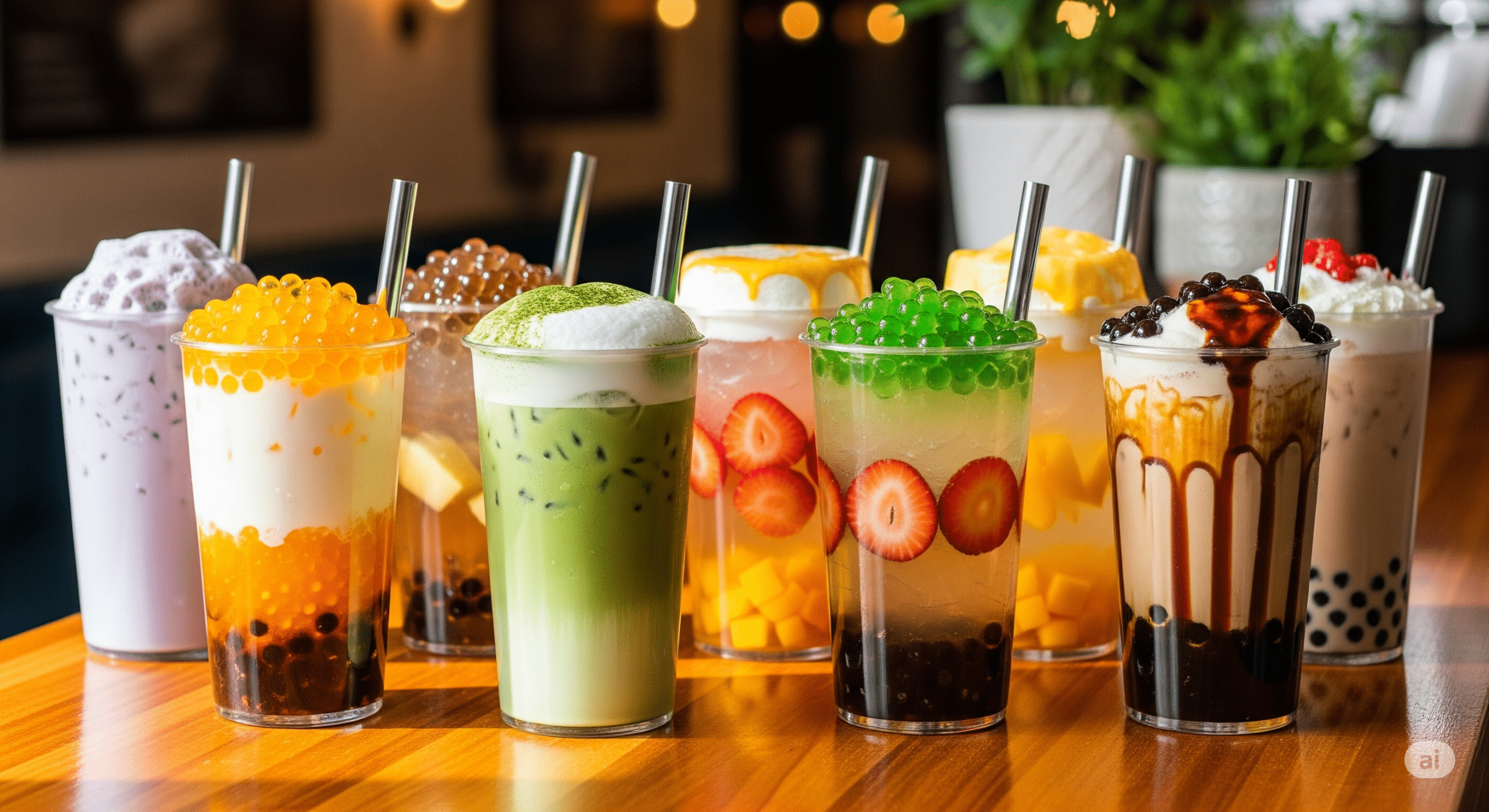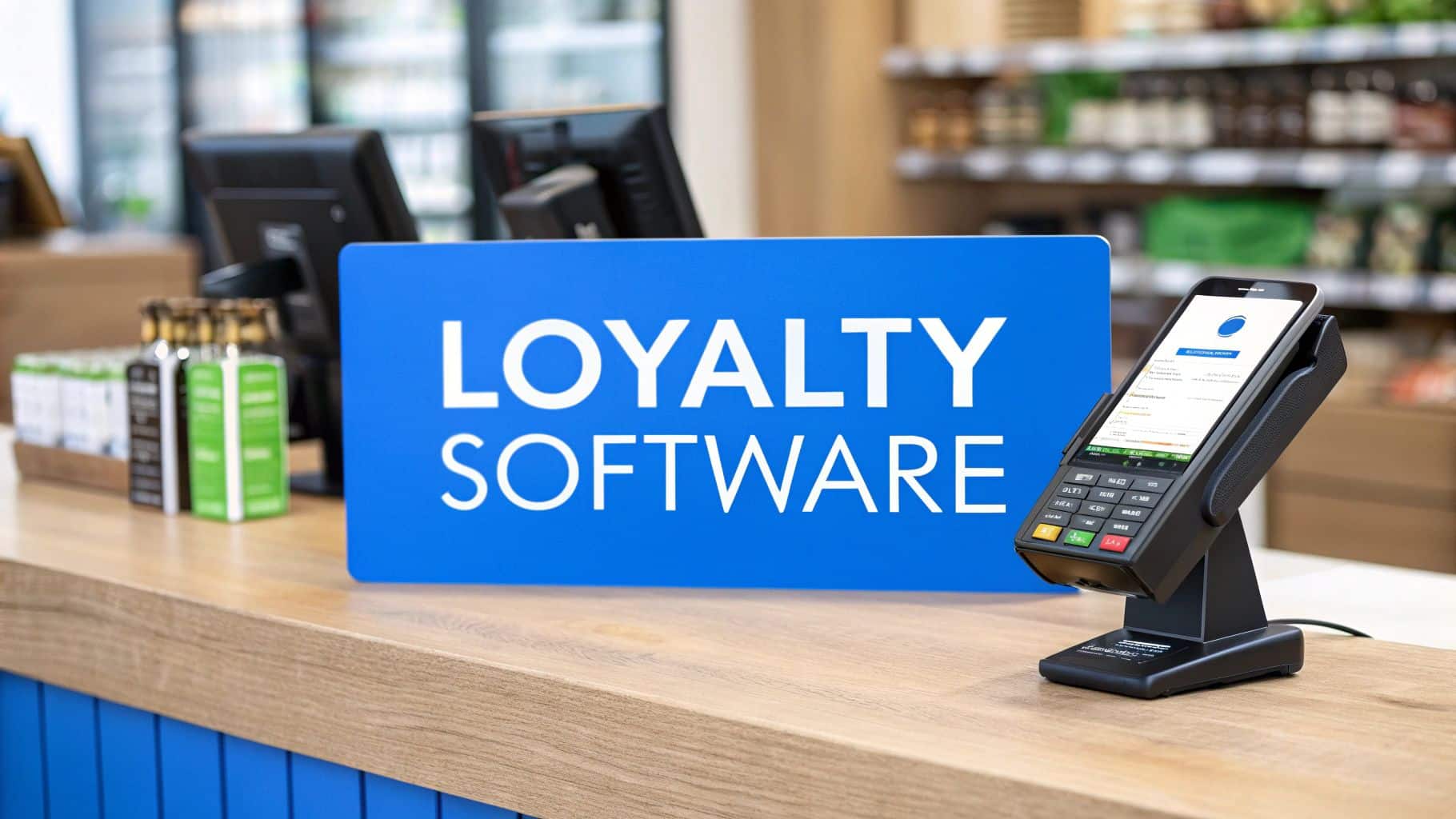The concept of a buffet menu has long been a favorite among diners seeking variety, value, and an interactive dining experience. From casual family-friendly settings to elegant seafood buffets, the buffet menu offers a diverse selection of dishes catering to every taste and dietary need. Whether you’re craving comfort food, international cuisine, or fresh vegetarian dishes, a well-designed buffet menu delivers an impressive lineup that keeps guests coming back for more. In this article, we’ll explore the key elements that make a buffet menu stand out, including the must-have stations, food selections, and setup tips that maximize both customer satisfaction and operational efficiency.
Table of Contents
- Essential Stations in a Buffet Menu
- Variety and Dietary Options in Buffet Food Selection
- Themed Buffets and Specialized Offerings
- Optimizing Buffet Setup and Self-Service Experience
- Beverage Choices and Complementary Pairings
- How Biyo POS Supports Buffet Management
- Frequently Asked Questions About Buffet Menus
Essential Stations in a Buffet Menu
A successful buffet menu relies heavily on its stations, each offering distinct culinary experiences that appeal to various preferences. The layout and diversity of stations play a major role in drawing diners and encouraging them to explore the full range of options available.
Salad Bar and Soup Options
The salad bar is a cornerstone of any buffet menu, providing fresh, crisp greens and an array of toppings that allow guests to customize their salads. Offering a variety of dressings, nuts, cheeses, and fresh vegetables enhances the appeal, especially for health-conscious diners. This station often serves as a light and refreshing start to the meal.
Alongside the salad bar, soup options add warmth and comfort. Buffets typically feature at least two types of soups, such as a hearty vegetable stew and a creamy bisque, catering to different tastes and dietary needs. Soups can also reflect seasonal ingredients or international flavors, contributing to the overall diversity of the buffet food selection.
These stations encourage guests to begin their meal with nutritious choices, balancing out heavier dishes and supporting those who prefer lighter fare. Their inclusion elevates the dining experience by offering variety from the very first plate.
Carving Station and Hot Entrees
The carving station is often the centerpiece of a buffet menu, showcasing roasted meats like prime rib, turkey, or ham, sliced to order for maximum freshness. This interactive element adds a touch of theatre and personalization, enhancing the all-you-can-eat experience. Guests enjoy watching chefs expertly carve their selections, which creates anticipation and excitement.
Hot entrees complement the carving station with a range of cooked dishes designed to satisfy various palates. These may include comfort food classics, international favorites, and seasonal specialties. Offering multiple hot entrees ensures that the buffet appeals to diverse tastes and dietary preferences.
Variety in hot entrees also keeps the buffet dynamic, inviting guests to try new flavors and combinations. Balancing rich, hearty dishes with lighter options ensures the meal feels indulgent yet manageable, enticing diners to explore all the buffet food selection.
Dessert Selection and Finger Foods
The dessert selection rounds out the buffet menu, often featuring an array of sweet treats such as cakes, pastries, and fruit-based desserts. This station adds a celebratory feel to the meal and gives guests the freedom to indulge according to their preferences.
Finger foods complement desserts and other sections of the buffet. Small bites like sliders, spring rolls, or mini quiches provide easy-to-eat options that work well for social settings or casual dining. These items are perfect for guests who want to sample multiple dishes without committing to a full plate.
Together, desserts and finger foods create a satisfying conclusion to the buffet experience. They provide both variety and convenience, keeping diners engaged until the very end.
Variety and Dietary Options in Buffet Food Selection
Diversifying the buffet menu is essential for attracting a broad audience and accommodating various dietary requirements. A thoughtful balance of flavors, textures, and nutritional options ensures every guest feels included and satisfied.
International Cuisine and Comfort Food
Integrating international cuisine into a buffet menu introduces guests to new flavors and culinary traditions. For instance, offering dishes like Italian pasta, Asian stir-fries, or Mediterranean mezze can transform an ordinary buffet into a global culinary tour. This variety appeals to adventurous diners and keeps the buffet exciting.
Comfort food, on the other hand, taps into nostalgia and familiarity. Including classics such as mashed potatoes, macaroni and cheese, or meatloaf creates a warm and inviting atmosphere. Many guests appreciate the balance between adventurous options and beloved comfort dishes, making them more likely to return.
Offering a combination of international and comfort food elevates the buffet experience. It respects cultural diversity while catering to those who seek the cozy and familiar, making the buffet menu appealing to all.
Vegetarian Dishes and Dietary Options
Providing ample vegetarian dishes on a buffet menu is no longer optional; it’s a necessity. Vegetarian diners expect creative and flavorful options beyond just salads. Items like vegetable stir-fries, stuffed peppers, and grain bowls offer satisfying alternatives that appeal to all guests.
Dietary options also extend to gluten-free, vegan, and allergen-conscious dishes. Clearly labeling these options helps diners make informed choices and improves their overall experience. Buffets that consider various dietary restrictions demonstrate care and inclusivity, boosting customer loyalty.
Ensuring diverse dietary options means guests can enjoy the all-you-can-eat format without worry. This thoughtful approach encourages more frequent visits and positive word-of-mouth recommendations.
Breakfast Buffet and Brunch Offerings
Breakfast buffets and brunch offerings bring their own unique charm to the buffet menu. These meals often feature items like eggs cooked to order, fresh pastries, pancakes, and a variety of hot and cold dishes tailored to morning appetites.
Brunch buffets may include both breakfast classics and lunch options, such as sandwiches, salads, and finger foods, appealing to a wider range of guests. The flexibility of timing combined with a diverse menu makes brunch buffets particularly popular for social gatherings and weekend dining.
Including breakfast and brunch options in your buffet menu can increase revenue and attract different customer segments. It also allows for seasonal and themed variations that keep the experience fresh and exciting.
Themed Buffets and Specialized Offerings
Themed buffets add a unique twist to the all-you-can-eat experience, creating memorable events that encourage repeat visits. These specialized offerings often focus on specific cuisines, holidays, or ingredient types.
Seafood Buffet and Carving Station Highlights
Seafood buffets are a luxurious option on many buffet menus. Featuring fresh shrimp, crab legs, oysters, and fish dishes, they appeal to seafood lovers looking for variety and quality. The seafood station often includes ice beds and live carving to maintain freshness and presentation.
The carving station in a seafood buffet might highlight items like grilled salmon or seafood paella, adding a warm and hearty element to the meal. This combination ensures that seafood buffets are not just about cold dishes but also offer a well-rounded culinary experience.
Specialized seafood buffets attract niche markets and elevate the restaurant’s profile. They require careful sourcing and presentation but reward operators with enthusiastic customers and strong word of mouth.
Family-Friendly Buffets and Kids’ Favorites
Family-friendly buffets prioritize kid-approved dishes alongside adult favorites. Including finger foods like chicken tenders, mini pizzas, and pasta dishes keeps children happy while adults enjoy more sophisticated options. This balance creates a welcoming atmosphere for all ages.
Interactive elements like build-your-own stations or dessert decorating areas engage younger guests and make dining out more enjoyable for families. Such features differentiate your buffet menu from more generic options and enhance customer satisfaction.
Focusing on family-friendly options broadens your market and builds long-term customer relationships. It also positions your establishment as a go-to spot for group celebrations and casual dining alike.
Buffet Catering Services and Banquet Menu Integration
Many restaurants expand their buffet offerings into catering services for events and banquets. A versatile buffet menu that adapts well to large groups and diverse tastes is ideal for this purpose. Offering themed buffet catering allows clients to customize menus to fit the occasion.
Integrating buffet catering services with your banquet menu ensures consistency and quality across all events. It also simplifies inventory and staffing by using similar dishes and presentation styles, maximizing efficiency.
This extension of buffet services provides additional revenue streams and builds brand recognition beyond the physical restaurant. It requires careful planning but can significantly boost overall business performance.
Optimizing Buffet Setup and Self-Service Experience
The physical arrangement and flow of a buffet setup greatly impact guest satisfaction and operational efficiency. A well-organized buffet enhances the self-service dining experience by reducing congestion and encouraging exploration.
Buffet Setup and Flow Management
Effective buffet setup involves strategic placement of stations to guide diners smoothly from one section to the next. Grouping similar dishes, such as cold dishes followed by hot entrees, creates a logical progression. This organization reduces confusion and wait times, improving overall satisfaction.
Space is another crucial factor. Allowing enough room for guests to move comfortably around the buffet prevents bottlenecks and encourages guests to sample more items. Clear signage and easy access to plates and utensils also contribute to a seamless flow.
Good setup practices benefit both diners and staff by minimizing delays and spills. Investing time in planning the layout pays off in a more pleasant and efficient buffet experience.
Self-Service Etiquette and Presentation
Self-service dining relies on guests following etiquette guidelines to maintain cleanliness and order. Restaurants can encourage this behavior by providing visible reminders and designing stations for easy access without overcrowding.
Presentation plays a major role in the appeal of buffet style meals. Attractive displays, fresh garnishes, and regularly replenished dishes convey quality and care. This attention to detail invites guests to indulge confidently, knowing that the food is fresh and well-maintained.
Maintaining high standards of hygiene and presentation ensures the buffet remains inviting throughout service. It also reduces waste and enhances overall customer perception.
Technology Integration in Buffet Management
Modern buffet operations benefit from technology that streamlines ordering, inventory, and customer flow. For example, Biyo POS offers features tailored to buffet setups, including real-time tracking of popular dishes and efficient payment processing.
Integrating technology into buffet management helps staff anticipate busy periods and replenish stations promptly. It also enhances the guest experience by reducing wait times and enabling contactless payments, which are increasingly important for customer comfort.
Technology like Biyo POS supports restaurants in delivering a smooth, modern buffet experience that meets evolving customer expectations while optimizing operational workflows.
Beverage Choices and Complementary Pairings
No buffet menu is complete without thoughtful beverage choices that complement the food selections. Offering a range of drinks enhances the dining experience and encourages longer stays.
Non-Alcoholic Beverages and Specialty Drinks
Non-alcoholic options such as iced teas, freshly squeezed juices, and flavored waters provide refreshing contrasts to rich buffet dishes. Including specialty drinks like mocktails or smoothies adds a fun, flavorful element for guests who want variety.
Ensuring that beverage choices cater to all age groups and dietary preferences supports the family-friendly aspect of the buffet. Offering sugar-free and low-calorie drinks addresses health-conscious diners.
Well-curated non-alcoholic beverages increase customer satisfaction by providing hydration and palate cleansing options that keep guests comfortable throughout their meal.
Alcoholic Beverage Pairings
For buffets that serve alcohol, selecting appropriate pairings can elevate the dining experience. Light wines, beers, and cocktails that complement different stations—such as crisp whites with seafood or bold reds with carved meats—enhance flavors and create a balanced meal.
Offering tasting flights or sampler drinks encourages guests to explore beverage options without overwhelming their palate. This approach increases engagement and can boost overall sales.
Thoughtful beverage pairings demonstrate attention to detail and sophistication, attracting guests who appreciate a well-rounded culinary experience.
Streamlining Beverage Service in Buffet Settings
To keep the buffet flow smooth, beverage service should be accessible and efficient. Self-service drink stations or staffed bars near the buffet allow guests to quickly refill their glasses without disrupting traffic.
Technology solutions, such as beverage tracking and digital ordering via apps, can reduce wait times and improve accuracy. These tools also provide valuable data for inventory management and future planning.
Balancing accessibility and quality in beverage service ensures guests remain refreshed and satisfied, making the buffet meal more enjoyable from start to finish.
How Biyo POS Supports Buffet Management
Biyo POS offers a comprehensive platform designed to streamline buffet operations and enhance the guest experience. Its features include customizable menu setups perfect for all-you-can-eat formats, real-time sales tracking, and efficient payment processing. These capabilities help managers monitor buffet stations closely, ensuring popular dishes remain stocked and service runs smoothly.
With Biyo POS, staff can easily manage inventory and adjust buffet menus to incorporate dietary options and themed offerings. Its intuitive interface supports faster order turnaround, minimizing wait times at carving stations and beverage areas alike.
By integrating Biyo POS into your buffet service, you gain a powerful tool that simplifies daily operations, improves customer satisfaction, and supports growth in competitive dining markets.
Frequently Asked Questions About Buffet Menus
What is included in a typical buffet menu?
A typical buffet menu includes a variety of stations such as salad bars, carving stations, hot entrees, cold dishes, and dessert selections. Beverage choices and dietary options are also integral parts of the offering to appeal to diverse tastes.
How do themed buffets differ from regular buffets?
Themed buffets focus on specific cuisines, holidays, or ingredients, creating a unique dining experience. They often feature specialized dishes and decor that reflect the chosen theme, offering guests something beyond the usual buffet style meals.
Can buffets accommodate dietary restrictions?
Yes, modern buffet menus usually include vegetarian dishes, gluten-free options, and allergen-friendly selections. Clear labeling and diverse food choices help diners with dietary restrictions enjoy the buffet safely.
What are some best practices for buffet setup?
Effective buffet setup includes organizing stations logically to ensure smooth flow, providing clear signage, and allowing enough space for guests to move comfortably. Maintaining high presentation standards and encouraging proper self-service etiquette are also key.
How does technology improve buffet management?
Technology like Biyo POS helps with real-time inventory tracking, order management, and payment processing. It reduces wait times, keeps stations well-stocked, and enhances overall guest satisfaction by creating a seamless buffet experience.






